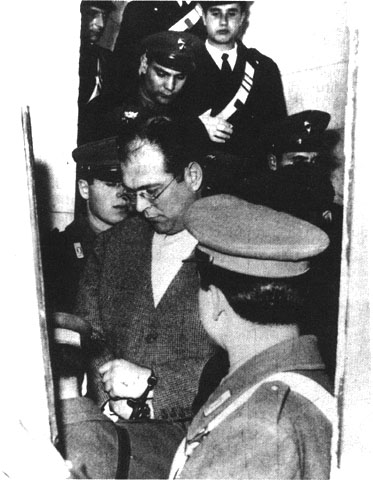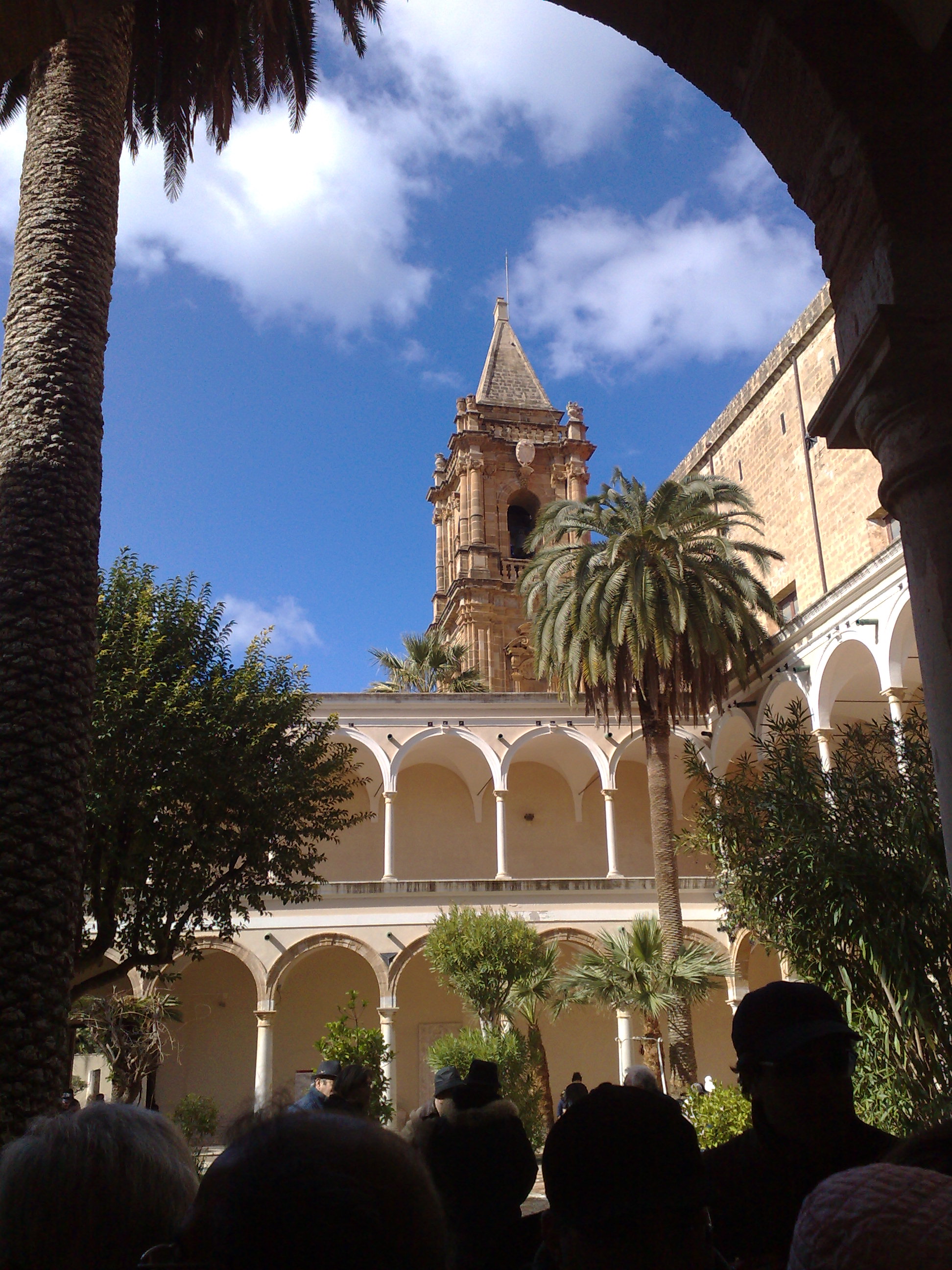|
Trappeto
__NOTOC__ Trappeto (''Trappitu'' in Sicilian) is an Italian municipality of 3,123 inhabitants in the Metropolitan City of Palermo, located in the north-west part of Sicily. It is part of the metropolitan area of Palermo. Trappeto is from Palermo and about from Trapani. It is a seaside resort on the coast in the Gulf of Castellammare. The city was founded in the 15th century. Frederick II of Aragon used it as part of his hunting grounds. From this, Trappeto evolved as a fertile agricultural centre. The main sources of income for the town include fishing and tourism. Known as "Trappetum cannamelarum", for the mill of the Sugar cane Sugarcane or sugar cane is a species of (often hybrid) tall, perennial grass (in the genus '' Saccharum'', tribe Andropogoneae) that is used for sugar production. The plants are 2–6 m (6–20 ft) tall with stout, jointed, fibrous stalk ... which was planted here in 1480 by the rich landowner Francis Bologna, who subsequently made a f ... [...More Info...] [...Related Items...] OR: [Wikipedia] [Google] [Baidu] |
Danilo Dolci
Danilo Dolci (June 28, 1924 – December 30, 1997) was an Italian social activist, sociologist, popular educator and poet. He is best known for his opposition to poverty, social exclusion and the Mafia in Sicily, and is considered to be one of the protagonists of the non-violence movement in Italy. He became known as the "Gandhi of Sicily"."Danilo Dolci, the Gandhi of Sicily, died on December 30th, aged 73" ''The Economist'', January 8, 1998 In the 1950s and 1960s, Dolci published a series of books (notably, in their English translations, ''To Feed the Hungry'', 1955, and ''Waste'', 1960) that stunned the outside world with their emotional force and the detail with which he depicted the desperate conditions of the Sicilian countryside and the power of |
Gulf Of Castellammare
The gulf of Castellammare is a large and deep natural inlet going from Capo Rama (near Terrasini, in the province of Palermo) and Capo San Vito near San Vito Lo Capo, in the province of Trapani. It is located on the western coast of Sicily and it faces the Tyrrhenian Sea. History In the Roman period the gulf of Castellammare was called ''"Sinus Aegestanus"'', referring to the ancient town of Segesta, which still has some ruins (the temple and the theatre). In 1714 it was called ''"golfo di Longuro or Longarico"'' by Guglielmo del'Isle in his geographical map, referring to the old town centre existing near the present Alcamo. Municipalities Along the gulf from east to west are, in sequence, the communes of Terrasini, Trappeto, Balestrate, Alcamo, Castellammare del Golfo and San Vito Lo Capo. The small town of Castellammare del Golfo, which gives its name to the gulf itself, is in its centre. In 2001 local governments constituted the association "Sviluppo del Golfo" (Gulf D ... [...More Info...] [...Related Items...] OR: [Wikipedia] [Google] [Baidu] |
Metropolitan City Of Palermo
The Metropolitan City of Palermo ( it, Città metropolitana di Palermo; scn, Cità metrupulitana di Palermu) is a metropolitan city in Sicily, Italy. Its capital is the city of Palermo. It replaced the Province of Palermo and comprises the city of Palermo and other 82 municipalities (''comuni''). History It was first created by the reform of local authorities (Law 142/1990) and then established by regional law on 15 August 2015. Geography Territory The Metropolitan City faces the Tyrrhenian Sea on the north, while on the west it is bordered by the province of Trapani, on the south by the province of Agrigento and by that of Caltanissetta, to the east by the Metropolitan City of Messina and the province of Enna. The island of Ustica is also included in the metropolitan territory. Municipalities The Metropolitan City includes 82 ''comuni'' (municipalities): *Alia * Alimena *Aliminusa *Altavilla Milicia *Altofonte * Bagheria * Balestrate *Baucina *Belmonte Mezzagno *Blufi *Bi ... [...More Info...] [...Related Items...] OR: [Wikipedia] [Google] [Baidu] |
Sicily
(man) it, Siciliana (woman) , population_note = , population_blank1_title = , population_blank1 = , demographics_type1 = Ethnicity , demographics1_footnotes = , demographics1_title1 = Sicilian , demographics1_info1 = 98% , demographics1_title2 = , demographics1_info2 = , demographics1_title3 = , demographics1_info3 = , timezone1 = CET , utc_offset1 = +1 , timezone1_DST = CEST , utc_offset1_DST = +2 , postal_code_type = , postal_code = , area_code_type = ISO 3166 code , area_code = IT-82 , blank_name_sec1 = GDP (nominal) , blank_info_sec1 = €89.2 billion (2018) , blank1_name_sec1 = GDP per capita , blank1_info_sec1 ... [...More Info...] [...Related Items...] OR: [Wikipedia] [Google] [Baidu] |
Sicilian Language
Sicilian ( scn, sicilianu, link=no, ; it, siciliano) is a Romance language that is spoken on the island of Sicily and its satellite islands. A variant, ''Calabro-Sicilian'', is spoken in southern Calabria, where it is called Southern Calabro notably in the Metropolitan City of Reggio Calabria. Dialects of central and southern Calabria, the southern parts of Apulia (Salentino dialect) and southern Salerno in Campania ( Cilentano dialect), on the Italian peninsula, are viewed by some linguists as forming with Sicilian dialects a broader Extreme Southern Italian language group (in Italian ). '' Ethnologue'' (see below for more detail) describes Sicilian as being "distinct enough from Standard Italian to be considered a separate language", and it is recognized as a minority language by UNESCO. It has been referred to as a language by the Sicilian Region. It has the oldest literary tradition of the Italo-Romance languages. A version of the ''UNESCO Courier'' is also availab ... [...More Info...] [...Related Items...] OR: [Wikipedia] [Google] [Baidu] |
Comune
The (; plural: ) is a local administrative division of Italy, roughly equivalent to a township or municipality. It is the third-level administrative division of Italy, after regions ('' regioni'') and provinces (''province''). The can also have the title of ('city'). Formed ''praeter legem'' according to the principles consolidated in medieval municipalities, the is provided for by art. 114 of the Constitution of Italy. It can be divided into ''frazioni'', which in turn may have limited power due to special elective assemblies. In the autonomous region of the Aosta Valley, a ''comune'' is officially called a ''commune'' in French. Overview The provides essential public services: registry of births and deaths, registry of deeds, and maintenance of local roads and public works. Many have a '' Polizia Comunale'' (communal police), which is responsible for public order duties. The also deal with the definition and compliance with the (general regulator plan), a document ... [...More Info...] [...Related Items...] OR: [Wikipedia] [Google] [Baidu] |
Palermo
Palermo ( , ; scn, Palermu , locally also or ) is a city in southern Italy, the capital (political), capital of both the autonomous area, autonomous region of Sicily and the Metropolitan City of Palermo, the city's surrounding metropolitan province. The city is noted for its history, culture, architecture and gastronomy, playing an important role throughout much of its existence; it is over 2,700 years old. Palermo is in the northwest of the island of Sicily, by the Gulf of Palermo in the Tyrrhenian Sea. The city was founded in 734 BC by the Phoenicians as ("flower"). Palermo then became a possession of Carthage. Two ancient Greeks, Greek ancient Greek colonization, colonies were established, known collectively as ; the Carthaginians used this name on their coins after the 5th centuryBC. As , the town became part of the Roman Republic and Roman Empire, Empire for over a thousand years. From 831 to 1072 the city was under History of Islam in southern Italy, Arab ru ... [...More Info...] [...Related Items...] OR: [Wikipedia] [Google] [Baidu] |
Trapani
Trapani ( , ; scn, Tràpani ; lat, Drepanum; grc, Δρέπανον) is a city and municipality (''comune'') on the west coast of Sicily, in Italy. It is the capital of the Province of Trapani. Founded by Elymians, the city is still an important fishing port and the main gateway to the nearby Egadi Islands. History Drepana was founded by the Elymians to serve as the port of the nearby city of Eryx (present-day Erice), which overlooks it from Monte Erice. The city sits on a low-lying promontory jutting out into the Mediterranean Sea. It was originally named ''Drépanon'' from the Greek word for "sickle", because of the curving shape of its harbour. Carthage seized control of the city in 260BC, subsequently making it an important naval base, but ceded it to Rome in 241BC following the Battle of the Aegates in the First Punic War. Two ancient legends relate supposed mythical origins for the city. In the first legend, Trapani stemmed from the sickle which fell from the hands o ... [...More Info...] [...Related Items...] OR: [Wikipedia] [Google] [Baidu] |
Frederick II Of Aragon
Frederick II (or III) (13 December 1272 – 25 June 1337) was the regent of the Kingdom of Sicily from 1291 until 1295 and subsequently King of Sicily from 1295 until his death. He was the third son of Peter III of Aragon and served in the War of the Sicilian Vespers on behalf of his father and brothers, Alfonso ΙΙΙ and James ΙΙ. He was confirmed as king by the Peace of Caltabellotta in 1302. His reign saw important constitutional reforms: the ''Constitutiones regales'', ''Capitula alia'', and ''Ordinationes generales''. Name Although the second Frederick of Sicily, he chose to call himself "Frederick III" (being one of the rare medieval monarchs who actually used a regnal number) – presumably because only some fifty years before, his well-known and remembered great-grandfather had ruled Sicily and also used an official ordinal: ''Fridericus secundus, imperator etc.''. Thus, ''Fridericus tertius'' was better in line with the precedent of his ancestor's or ... [...More Info...] [...Related Items...] OR: [Wikipedia] [Google] [Baidu] |
Saccharum Officinarum
''Saccharum officinarum'' is a large, strong-growing species of grass in the genus ''Saccharum''. Its stout stalks are rich in sucrose, a simple sugar which accumulates in the stalk internodes. It originated in New Guinea, and is now cultivated in tropical and subtropical countries worldwide for the production of sugar, ethanol and other products. ''Saccharum officinarum'' is one of the most productive and most intensively cultivated kinds of sugarcane. It can interbreed with other sugarcane species, such as ''Saccharum sinense'' and ''Saccharum barberi''. The major commercial cultivars are complex hybrids. About 70% of the sugar produced worldwide comes from ''S. officinarum'' and hybrids using this species. Description ''Saccharum officinarum'', a perennial plant, grows in clumps consisting of a number of strong unbranched stems. A network of rhizomes forms under the soil which sends up secondary shoots near the parent plant. The stems vary in colour, being green, pinki ... [...More Info...] [...Related Items...] OR: [Wikipedia] [Google] [Baidu] |



